Amethyst belongs to the quartz family and the purple color is due to traces of iron. It begins its life as a transparent quartz, but when it is found in places of the mantle of the Earth where it develops great temperatures and pressures it becomes purple. It is colored purple-to-lilac, and ranging from opaque to transparent. It is named from the Greek word «αμέθυστος» "amethustos", meaning without wine. Amethyst is an especially powerful stone, a symbol of sincerity, security, and peace of mind, the jewel of friendship, love and peace. It protects, reduces negativity and brings spirituality - hence the name "Pope Stone". The Christian crusaders attached it to their rosaries. A stone of divine love. 
In ancient times Amethyst was one of the rarest and most precious stones, its price often exceeding the price of Diamond. Queen Cleopatra is said to have an amethyst amulet ring carved in the form of God Mithras on it. Greeks and Romans believed that anyone who drank wine from an amethyst cup or who simply had an amethyst ring was not in danger of choking. The Egyptians placed it as a talisman and precious treasure in the tombs of Pharaohs.  Ιn the Middle Ages they believed that Amethyst drives drowsiness and laziness, exacerbates the mind and protects its owner from magic. Also during this period the rings of the Catholic bishops, even the Pope himself, were adorned with it. The Arabs believed to protect against nightmares and gout (gout). Great Catherine had sent thousands of workers to the Ural mines to extract the precious gem. Many amateurs decorate the royal symbols of England, adorn the royal scepter, as well as the Prince of Wales crown. The stone's price fell when huge deposits in South Africa were discovered.
Ιn the Middle Ages they believed that Amethyst drives drowsiness and laziness, exacerbates the mind and protects its owner from magic. Also during this period the rings of the Catholic bishops, even the Pope himself, were adorned with it. The Arabs believed to protect against nightmares and gout (gout). Great Catherine had sent thousands of workers to the Ural mines to extract the precious gem. Many amateurs decorate the royal symbols of England, adorn the royal scepter, as well as the Prince of Wales crown. The stone's price fell when huge deposits in South Africa were discovered.
Although some say amethyst is less powerful than fluorite, which also carries the purple ray, linked with the zodiac it can help psychic knowledge. Healers of times gone by suggest this stone could help dream inspiration if placed under the pillow at night. Legend even says drinking from an amethyst chalice will prevent intoxication. It corresponds to the zodiac signs of Aries, Libra, Scorpio, Sagittarius, Capricorn, Aquarius and Pisces. For 5,000 years Imperial China used the word "jade" as something precious.

 Because jade is
said to have all the attributes most valued in society.
Because jade is
said to have all the attributes most valued in society.
A symbol of
purity and serenity, it is delicate, but will not break - is beautiful, but not
impermanent, it can be flawed with lines, but still pleasing. It is believed to
radiate divine unconditional love and balance the emotions. Held in the
hand it can improve judgment - ancient silk traders often held jade while
bartering. A small piece of jade worn around the neck was said to dispel
illness.
Chinese jade first arrived in the West during the
sixteenth century, brought from Canton by the Portuguese. Today jade
continues to be a symbol of love, virtue, and status. With Chinese
carvings reaching the highest value. The best jade has a waxy, pearly
appearance. Feeling cool and so smooth, it seems soft to the touch.
Yet hard enough that pressure from a sharp knife will not leave a mark.
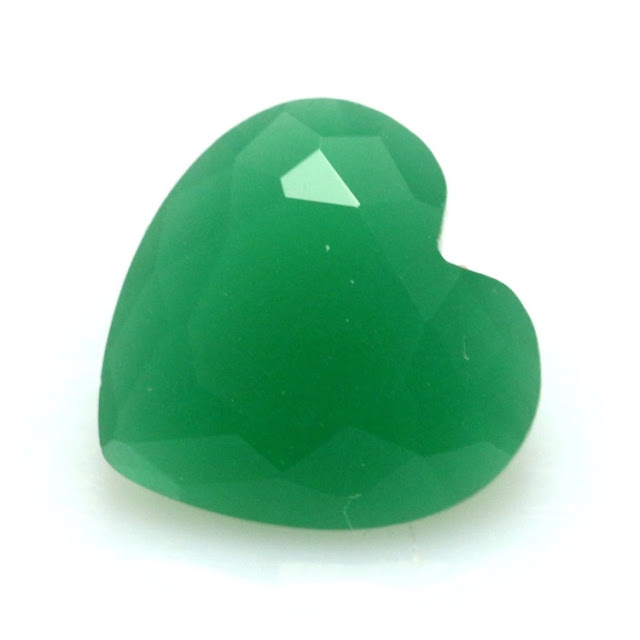 The most famous type of jade carved in China is from
Burma, with shades of green, lavender, yellow, white and grey. These
colors form over millions of years from minerals in the rock. Every
piece of jade has a secret meaning. Discovering that meaning and the
legends behind it is a very satisfying for those who practice this dying art.
The most famous type of jade carved in China is from
Burma, with shades of green, lavender, yellow, white and grey. These
colors form over millions of years from minerals in the rock. Every
piece of jade has a secret meaning. Discovering that meaning and the
legends behind it is a very satisfying for those who practice this dying art.
Jasper is a crystalline variety of quartz that contains up to 20% foreign material. This is what determines the stone’s multicolor, striped, or spotted appearance. Jasper was highly valued in ancient times, not only for its beauty, but also for the reputed magical and medicinal properties. In France jasper ornaments date back two-millennia, Babylonians used in for seals twelve-hundred years ago, and in India it has been used for jewelry and building for centuries.
Jasper is known as the "Patron stone of counselors and healers". Being very healing and balancing, it was used for many different medications - like grinding into a powder to treat gall bladder and kidney disease. Ancient people used jasper to
relieve pain, especially childbirth. Jasper is reported to sooth the nerves and to treat the kidneys, spleen, bladder, liver and stomach.
Red jasper is an intensely protective stone, stabilizing the aura and bringing contentment - even said to assist astral travel during meditation. Poppy jasper is dark red with black flecks and thought to heal allergies to animals. Picture jasper is pale brown with darker patterns - named from pictures formed by patterns caused by trapped fossilizes algae. Picture jasper helps to evaluate life's issues and develop business pursuits leading to increase. Fancy jasper is creamy brown with lavender or green swirls. Believed to clear the mind, bring tranquility and eliminate worry and depression. And green jasper is thought to be lucky in monetary trades.
Garnet is the name of at least ten similar mineral species – with many “garnets” being a combination of these minerals. All are quite sturdy and resistant to everyday wear and tear because of their excellent hardness of over 7 on the Mohs’ scale.
Garnet, the
January birthstone, derived its name from the Latin word granatus, meaning like
a grain - referring to how their crystals resemble seeds embedded in the
matrix. Garnet comes in many colors, but a reddish brown is the most common.
The use of garnets as a gemstone can be traced to prehistoric times. Noah
is recorded using a garnet lantern to steer his Ark through the darkness of the
night. Garnets are found in jewelry from ancient Egyptian, Greek and Roman
eras. Travelers wore garnets as they were considered talismans and protective
stones, because it was believed garnets illuminate the night and wore off evil.
Said to remove nightmares and depression. Today science says the
proverbial luminosity of garnet is caused by its high refraction.
The mineral fluorite
is famous for its glassy luster and wide range of
colors - from purple, blue, green, yellow, colorless, brown, pink, black and
reddish orange. Named after the Latin word "To flow".
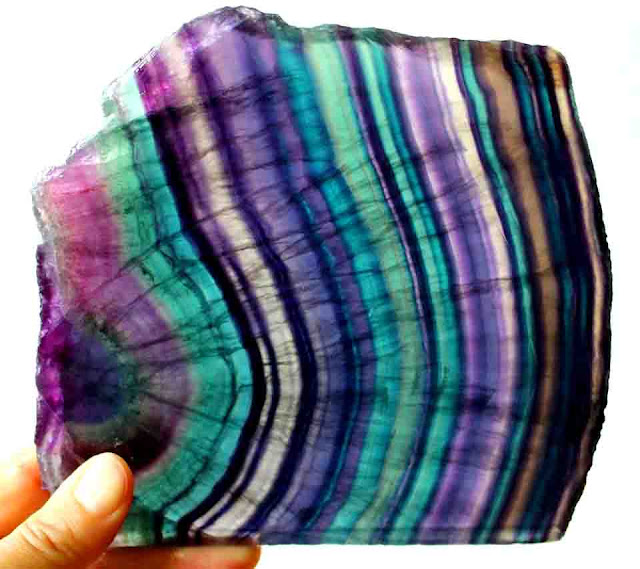 Fluorite brings perceptiveness, peace and calm to a troubled mind. It's
particularly useful in medication, because holding even a small piece in the
hand brings a sense of inner peace. Those who choose this stone are
likely to be artistic and creative, being able to earn money from their
talent – as well as self-critical with a fear of failure.
Fluorite brings perceptiveness, peace and calm to a troubled mind. It's
particularly useful in medication, because holding even a small piece in the
hand brings a sense of inner peace. Those who choose this stone are
likely to be artistic and creative, being able to earn money from their
talent – as well as self-critical with a fear of failure.
 Fluorite is considered to be the most powerful healing stone, especially for
strengthening the bone tissue. Fluorite have been excavated from the
ruins of Pompeii, but despite being a favorite with ancient civilizations, has
been recently overlooked.
Fluorite is considered to be the most powerful healing stone, especially for
strengthening the bone tissue. Fluorite have been excavated from the
ruins of Pompeii, but despite being a favorite with ancient civilizations, has
been recently overlooked.
The most
common flaked stone is goldstone.
A man-made
stone, first created by alchemists trying to make gold. Other variations
are bluestone, lemon stone, and peach stone. Each are a type of glass
mixed with metals to form a glittery appearance.
However, all material has properties - these are transmitter stones. Causing light to pass through you in order to convey or receive a medium. Revitalizing, energizing, and encouraging a positive attitude and individualism. As well as calming, refreshing, and is said to protect the center of the body reducing stomach tension
”Citrine” comes from the French word for lemon, and is any quartz crystal or cluster
that’s yellow to orange. The darker, orange colors were traditionally the
best, but today people prefer bright lemony shades to mix with pastel
colors. Citrine with man-made color tends to have more of an orange or
reddish caste. Most natural citrine starts life as amethyst until heated
in a molten state to change.
 Sunny and affordable, citrine brightens all jewelry, blending especially well
with the yellow gleam of polished gold. The yellow color is a natural
reviver, and citrine focuses the mind bringing a feeling of self-esteem.
Sunny and affordable, citrine brightens all jewelry, blending especially well
with the yellow gleam of polished gold. The yellow color is a natural
reviver, and citrine focuses the mind bringing a feeling of self-esteem.
 In medication it helps re-establish the link between your conscious and
subconscious minds. If you are feeling down, try holding citrine to lift
your spirit. It’s also very good at healing the body and helping people
communicate. Citrine has warm energy, promotes optimism, and attracts
abundance.
In medication it helps re-establish the link between your conscious and
subconscious minds. If you are feeling down, try holding citrine to lift
your spirit. It’s also very good at healing the body and helping people
communicate. Citrine has warm energy, promotes optimism, and attracts
abundance.
 Citrine is one of the few stones that removes negative energy and never
requires cleansing. In ancient times it was carried as a protection
against snake venom and evil thoughts.
Citrine is one of the few stones that removes negative energy and never
requires cleansing. In ancient times it was carried as a protection
against snake venom and evil thoughts.
Known as a "merchants'
stone”, placed in the cash register to not only acquire wealth but to maintain
it as well. Citrine is the birthstone for November, and its corresponding
signs are Gemini, Aries, Libra, and Leo
Chalcedony is a very fine-grained variety of quartz. It has a waxy luster and appears in a great variety of colors -- usually blue-white, buff, light tan, gray, yellow or brown. It has a compact fibrous structure and fine splintery fracture.

In the petrified forests of the American Desert Southwest, many of the original
tree tissues have been replaced by chalcedony in the formation of petrified
wood. What remains is a mineral replica of the original tree in various
fantastic colors. The brilliant reds and greens are caused primarily by traces
of iron oxides. Some of the best displays of petrified wood can be seen in
eastern Arizona's Petrified Forest National Park. In all ages many varieties of chalcedony have been used as gems, and many
colored varieties are still cut and polished as ornamental stones. Unless it is
intricately carved or featured, Chalcedony is valued much less than it once
was.
In all ages many varieties of chalcedony have been used as gems, and many
colored varieties are still cut and polished as ornamental stones. Unless it is
intricately carved or featured, Chalcedony is valued much less than it once
was.
It is said that chalcedony was used as a sacred stone by the Native Americas, promoting stability within the ceremonial activities of the tribe. Chalcedony is said to augment emotional balance, vitality, stamina, endurance, kindness, charity and friendliness. It supposedly alleviates hostilities, irritability and melancholy.
Lapis Lazuli is gemstone straight out of fairy tales of the Arabian Nights: deepest blue with golden shining Pyrite inclusions which twinkle like little stars. Named after “lapis“, the Latin word for stone, and the Arabian for blue. Thousands of years before Christ, Egyptian and Persian royalty wore lapis as a talisman to deter danger. In other cultures it was worshipped as a holy stone and thought to have magical power in oriental countries. Many believe the Biblical sapphire was actually lapis lazuli. Through the ages, lapis has been associated with power, wisdom, love, and a stimulant for psychic ability. And in the art world it’s famous for the ultramarine blue paint used by the Grand Old Masters, like on portraits of the Virgin Mary. While other compositions have long since paled, lapis has lost nothing of its brilliance.  Lapis is still mined in the remote mountains of Afghanistan, the best stones being deep and intensive blue with finely distributed golden crystals. The twinkling inclusions are not gold but pyrite, caused by iron. The blue color comes from the sulfuric content of lazurite, and looks dull until polished. Lapis is a soft stone that should be treated gently while polishing. Unpolished, the dark blue looks dull with golden inclusions and whitish veins from marble. However, a Lapis which has dulled after being worn too often is easily polished, and jewelry is often surface sealed with wax or resin.
Lapis is still mined in the remote mountains of Afghanistan, the best stones being deep and intensive blue with finely distributed golden crystals. The twinkling inclusions are not gold but pyrite, caused by iron. The blue color comes from the sulfuric content of lazurite, and looks dull until polished. Lapis is a soft stone that should be treated gently while polishing. Unpolished, the dark blue looks dull with golden inclusions and whitish veins from marble. However, a Lapis which has dulled after being worn too often is easily polished, and jewelry is often surface sealed with wax or resin.For many people lapis is a stone of truth and friendship.
Bringing harmony to relationships and helping its wearer openly state their individual opinion. While aiding inner vision, wisdom, insight and good judgment. It’s also said to be good for treating thyroid problems and helping to get in touch with our inner selves. A powerful gemstone that should not be worn by those who lack strength of character.
Obsidian
is natural glass formed by rapid cooling of volcanic lava. Usually black,
shiny, and hard – but also grey, brown, or with white flecks. When fractured
it leaves sharp edges, hence its use since the stone-age as a cutting tool and
for weapons. Snowflake obsidian is caused by inclusions of small, white,
crystals of silica in the black glass producing a blotchy snowflake
pattern. Sheen or Rainbow Obsidian is caused by small bubbles of air
trapped in the molten rock just before being cooled. 
Obsidian is a nurturing stone that can help you to accept the changes that are
a part of everyone's live. Its energy has a grounding, stabilizing
influence, and can help dispel negative energy.  But for healing, it’s
recommend to balance obsidian with a lighter crystal, like smoky quart.
Also used to improve vision, relieve digestive problems, and clear the
mind. And is sometimes gazed into like a crystal ball, to obtain images
and help find inner spiritual vision.
But for healing, it’s
recommend to balance obsidian with a lighter crystal, like smoky quart.
Also used to improve vision, relieve digestive problems, and clear the
mind. And is sometimes gazed into like a crystal ball, to obtain images
and help find inner spiritual vision.
Onyx
is a term used for several stones. It has been dyed since ancient time, with
the popular pure black variety, being dyed microcrystalline quartz. Its
natural color is usually brown, white or grey. And onyx used in
architecture isn't a form of quartz at all, but a type of limestone
marble. Onyx is very similar to agate. With straight bands of
brown, white or black, where agate has curved bands of many colors.
Although regarded as protective, onyx has a reputation as a stone of
discord. Onyx was worn to cool the ardors of love, probably because it
helps to balance the mind and emotions. Not only avoided by lovers, but also at
night, as it provoked nightmares. However, it does improve concentration
and devotion, hence many onyx rosaries. Onyx is a strength-giving stone,
aiding confidence and useful for athletes or people under stress. Its
energy is a mental tonic and can help you cope with fears and worries, making
you feel in harmony with your surroundings.
All of Nature’s fury can be seen in fine opal. Like a Rembrandt: fire,
lightning, all the colors of the rainbow and the shine of far seas. Australia
supplies about 95% of the world’s opal from the outback. Aborigines there
believe their creator came on a rainbow to bring the message of peace - at the
spot where he touched the ground, opal was born! The name Opal could have
came from many places. In Greek “opallios”, translates as “color change”, and
to the ancient Romans “opalus”, was a stone from several elements.
Fine opals shine and sparkle in a continually changing play of colors called
“opalising”. Most opal has this play of colors except “Common Opal”, a name
give to all others, like Pink Opal. Because demand outstrips supply, fine
opalizing opal is very very expensive, so is sold in individual beads for
hundreds of US dollars each. Therefore, the type of opal common in necklaces is
non-opalizing opal – usually pink opal from Peru.
Opal’s fantasy-like play of color is caused by small spheres of silica creating interference and refraction manifestations. The spheres, which are arranged in compact structures, dissect light through the gemstone, turning it into the rainbow effect, always new and different.
The least
expensive cultured pearls today rival the most
expensive natural pearls ever found. Natural freshwater pearls occur in
mussels for the same reason saltwater pearls occur in oysters. Foreign
material inside a mussel can't be expelled. To reduce irritation, the
mollusk coats the intruder with the same secretion it uses for shell-building,
nacre. To cultivate a pearl, farmers slit the mussel and insert small pieces
of live tissue from another mussel.

The ancient Chinese practiced this technique, but the first real cultured
freshwater pearls originated in Japan. In the 1930's, Japanese farmers by
Lake Biwa achieved natural colors unseen in saltwater pearls. However,
water pollution today has virtually destroyed pearl production there.  China now
has the resources that Japan lacks: many large lakes, rivers, and a low-cost
work force. The first Chinese cultured pearls were basic, until the
1990's when China revolutionized pearling. Shapes, luster, and colors of
the new Chinese pearls now surpass Biwa quality. Copying the Japanese to
improve off-white and mottling, China uses a mild bleach, bright lights, and
heat. Natural freshwater pearls are usually odd shapes. So for more roundness,
the Chinese now reshape rejected pearls into spheres, and then nucleate mussels
with them.
China now
has the resources that Japan lacks: many large lakes, rivers, and a low-cost
work force. The first Chinese cultured pearls were basic, until the
1990's when China revolutionized pearling. Shapes, luster, and colors of
the new Chinese pearls now surpass Biwa quality. Copying the Japanese to
improve off-white and mottling, China uses a mild bleach, bright lights, and
heat. Natural freshwater pearls are usually odd shapes. So for more roundness,
the Chinese now reshape rejected pearls into spheres, and then nucleate mussels
with them.
The best
pearls have thick overlapping layers of nacre. This can be tested by
viewing its "luster". Roll the pearl with a pen in good light -
the best pearls will reflect the pen the most. A large pearl is only more
valuable if it's the same quality as a smaller one - and the rounder the
better. Being an organic gem, grooves, pits, or dents are expected.  However, matching color for a complete necklace is important. Freshwater
pearls are popular for their colors: white, silvery-white, pink, red, copper,
brown, lavender, purple, green, blue, and yellow. The most desirable are
the pastel pinks, roses, lavenders, and purples. Color comes from the
mussel species and water quality. Generally pearls assume the color of
the shell in which they form, but permanent dyes are used today for most
saturated colors.
However, matching color for a complete necklace is important. Freshwater
pearls are popular for their colors: white, silvery-white, pink, red, copper,
brown, lavender, purple, green, blue, and yellow. The most desirable are
the pastel pinks, roses, lavenders, and purples. Color comes from the
mussel species and water quality. Generally pearls assume the color of
the shell in which they form, but permanent dyes are used today for most
saturated colors.
Ruby Zoisite is a creative stone, its energy coming from the red
and green colors. In the chakra system red relates to creativity and sexuality,
and green is associated with healing, balancing, and abundance.
By itself, ruby is associated with passion. It can bring anger to the surface,
and will amplify any emotion. Zoisite provides a natural medium for softening
ruby's qualities. Its green cools and stabilizes. This is very valuable when
passion seems overwhelming, and ruby in zoisite is excellent for healing a
broken heart and reducing obsessive feelings about another person.
It can also be very helpful for creative energies. Often our ideas swirl around
in our heads, never quite reaching realization. What is needed in such cases is
some stabilizing energy, which zoisite provides. Ruby zoisite has become more
popular. This may indication that more people are ready to have relationships
which heal, not hurt, and to be more expressive of their innate creativity.
Peridot (pronounced pair-a-doe) is the gem variety of olivine, a mineral formed
under intense heat. Perhaps named from the French word “peritot” meaning
unclear, due to its inclusions and cloudy nature. Small crystals of
peridot are often found in rocks by volcanoes and in meteors that fall to
earth. Because the iron which creates the color is an integral part of
its structure, its color is always green - ranging from transparent lime
to olive green. 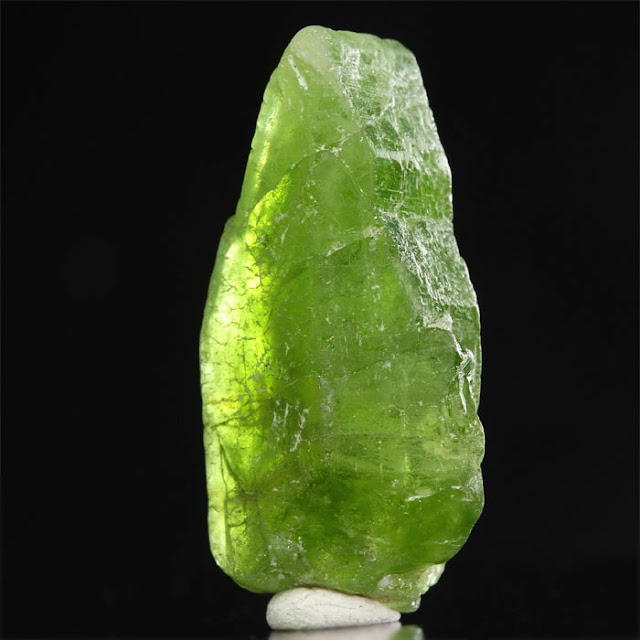
Peridot has
been mined as a gemstone for thousands of years, said to be the favorite gem of
Cleopatra, and mentioned in the Bible. In ancient Egypt it was mined at
night because legend tells that peridot was hard to see during the day, yet
easily visible by lamplight.  The Greeks and Romans called peridot “topazion”
and “topazius” - the later named topaz, to end the confusion between the
two. Peridot has also been confused with emerald and many jewelers refer
to it as "evening emerald".
The Greeks and Romans called peridot “topazion”
and “topazius” - the later named topaz, to end the confusion between the
two. Peridot has also been confused with emerald and many jewelers refer
to it as "evening emerald". 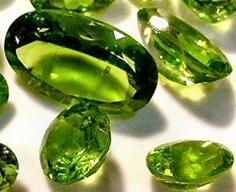 Peridot was later used to
decorate medieval churches, carried back to Europe by the Crusaders, like the
huge stones of more than 200 carats in size at Cologne Cathedral.
Peridot was later used to
decorate medieval churches, carried back to Europe by the Crusaders, like the
huge stones of more than 200 carats in size at Cologne Cathedral.
Peridot is recommended for insomnia, digestive problems and to stimulate the mind. Some say peridot has the power to drive away evil spirits, intensified when the stone is set in gold. And it’s also said to strengthen the power of any medicine drunk from peridot goblets.
Sodalite is a blue stone usually peppered with white calcite. Especially valuable for those in mental confusion – it helps rationalize decisions and calms the emotions. It also encourages self-expression, by uniting logical thought with the spirit and helping you realize that you don't have to do things the way you always have. And it’s been said that a piece of sodalite under the pillow can help you remember dreams.
Unakite
consists of pink feldspar mottled on green epidote and quartz. Famous for
finding the root cause of an illness – useful for conditions where the symptoms
can’t otherwise be treated.  It works by allowing the gentle release of
long-term energy blocks, leading to an emotionally calm state.
It works by allowing the gentle release of
long-term energy blocks, leading to an emotionally calm state.  Also
believed to stimulate the reproductive system, encourage pregnancy, and helping
the healthy development of the baby in the womb. Some people even say Unakite
can neutralize the harmful effects of electromagnetic radiation from television
sets.
Also
believed to stimulate the reproductive system, encourage pregnancy, and helping
the healthy development of the baby in the womb. Some people even say Unakite
can neutralize the harmful effects of electromagnetic radiation from television
sets.
Tiger's-eye is
polished to show its characteristic band of pearly luminescence,
resulting from light reflecting off its thin parallel inclusions in the
quartz.  Colors range from a rich golden yellow to dark brown. Tiger’s-Eye
is good for those worried about health as it’s said to guard against
hypochondria. It builds will-power and inner-strength, and has
traditionally been used to heal wounds, eyes, and the lower legs and
feet. It’s also said to bring spiritual well-being and psychic protection
– as well as attracting beauty and abundance.
Colors range from a rich golden yellow to dark brown. Tiger’s-Eye
is good for those worried about health as it’s said to guard against
hypochondria. It builds will-power and inner-strength, and has
traditionally been used to heal wounds, eyes, and the lower legs and
feet. It’s also said to bring spiritual well-being and psychic protection
– as well as attracting beauty and abundance.
Similar stones are cat’s-eye
and hawk’s-eye –
all with bands of pearly luminescence creating a supernatural appearance. Cat’s-eye can be yellowish-brown to green with a white band, and is said to bring wealth and pleasure from your children. Hawk’s-eye has a blue radiance. When a bright light source is directed at the side of the stone, one side of the eye will be milky white and the other remains colored. When the stone is rotated, the colors switch.
Topaz is a common gemstone that has been used for centuries in jewelry.
Usually golden brown to yellow color. The Egyptians said that topaz was colored with the golden glow of the mighty sun god Ra.
This made topaz a very powerful amulet that protected the faithful against harm. The Romans associated topaz with Jupiter, who also is the god of the sun. And Greek legend has it that topaz could make the wearer invisible and would change color in the presence of poisoned food or drink. It is the birthstone of November.
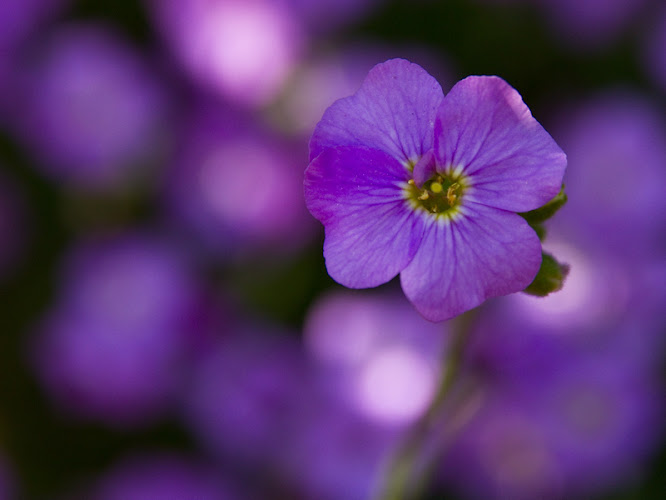


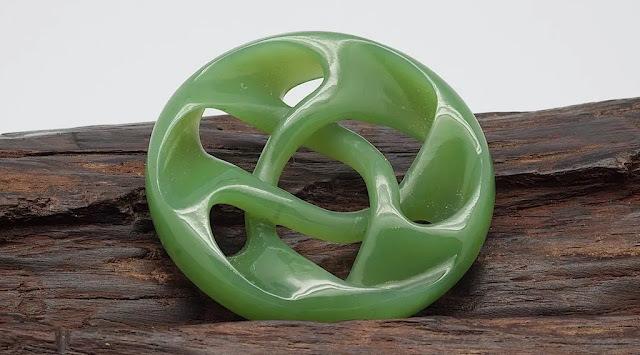
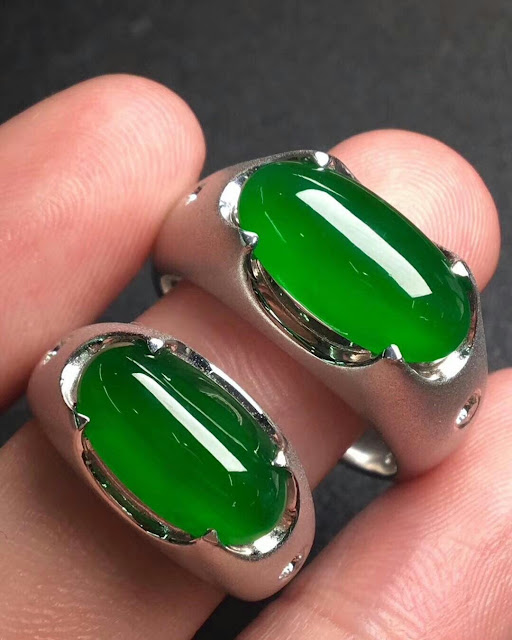





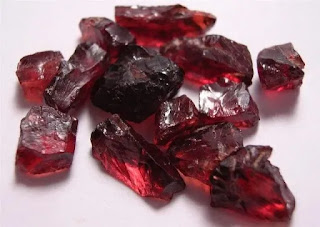






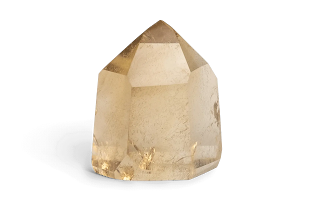




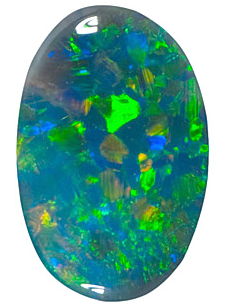

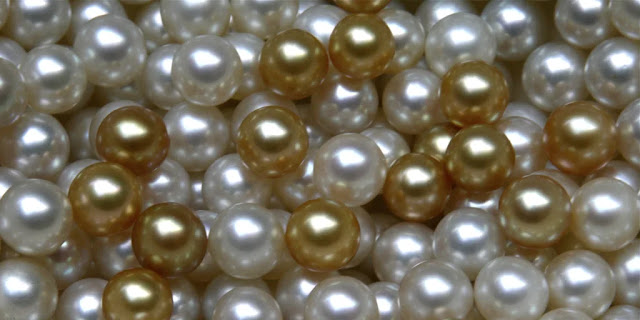




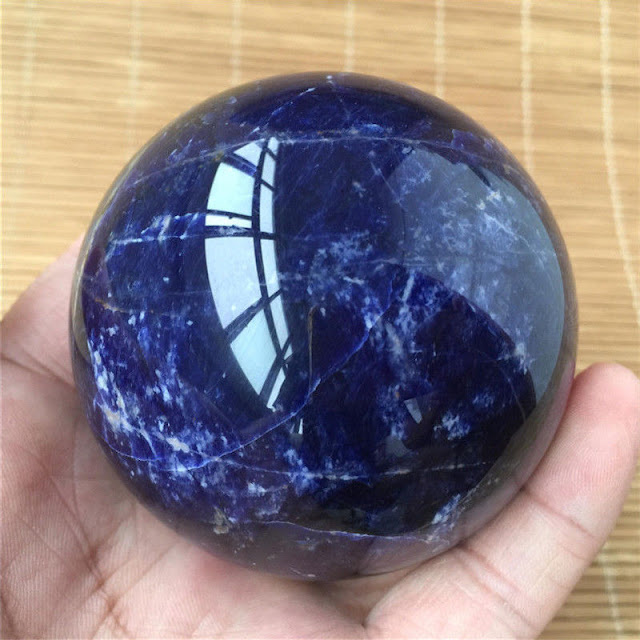


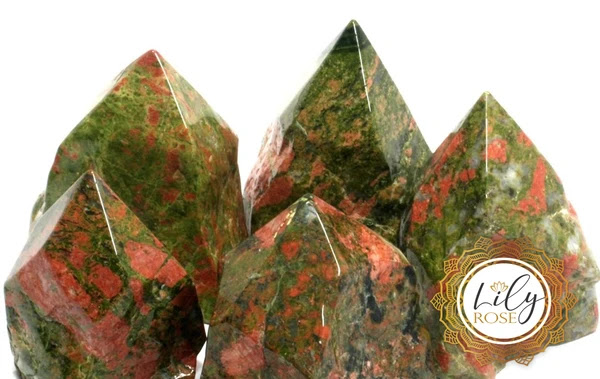
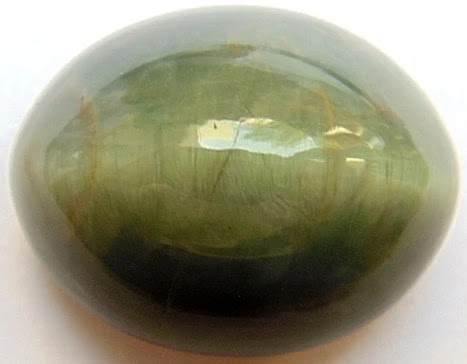









Δεν υπάρχουν σχόλια:
Δημοσίευση σχολίου